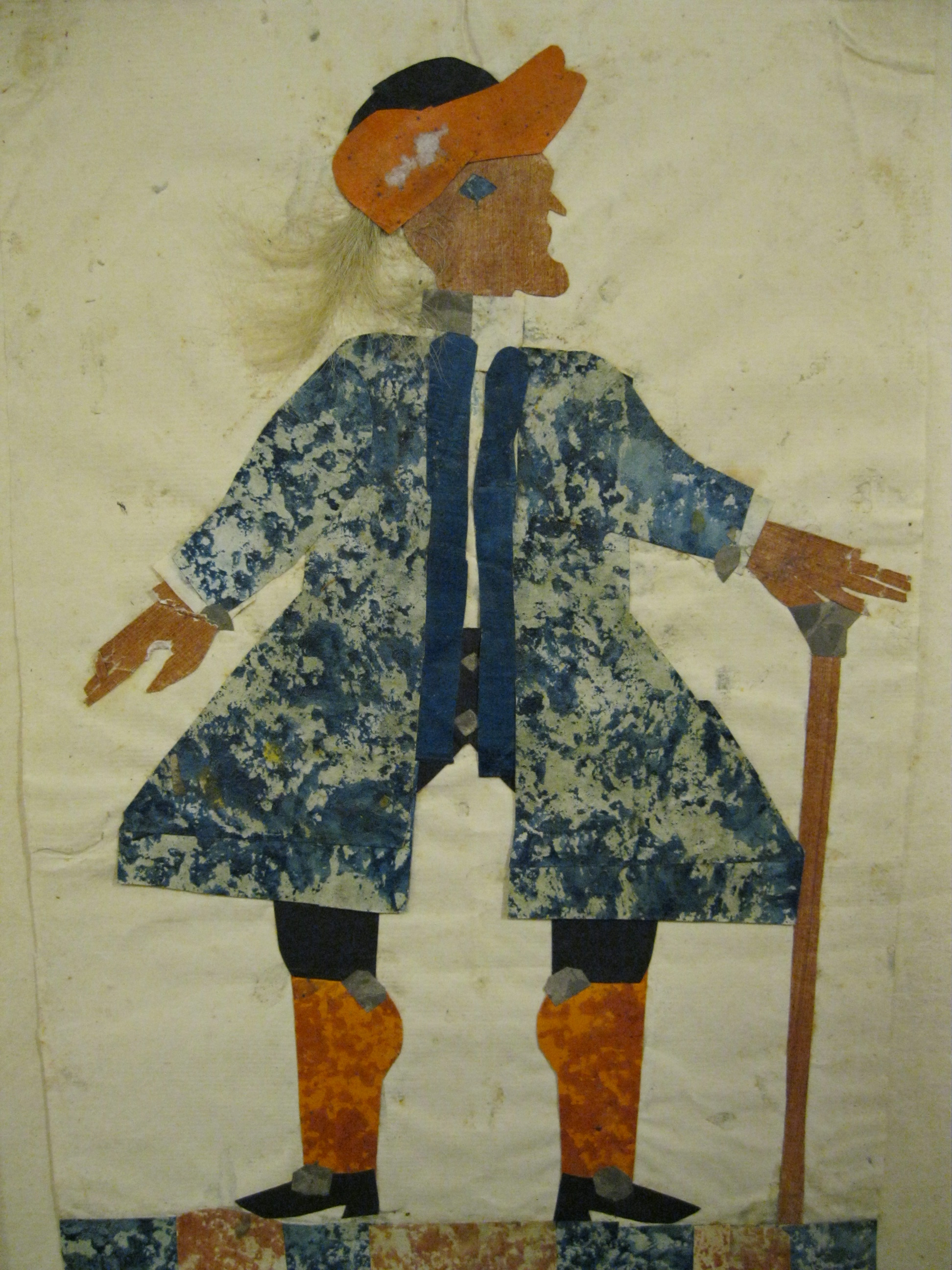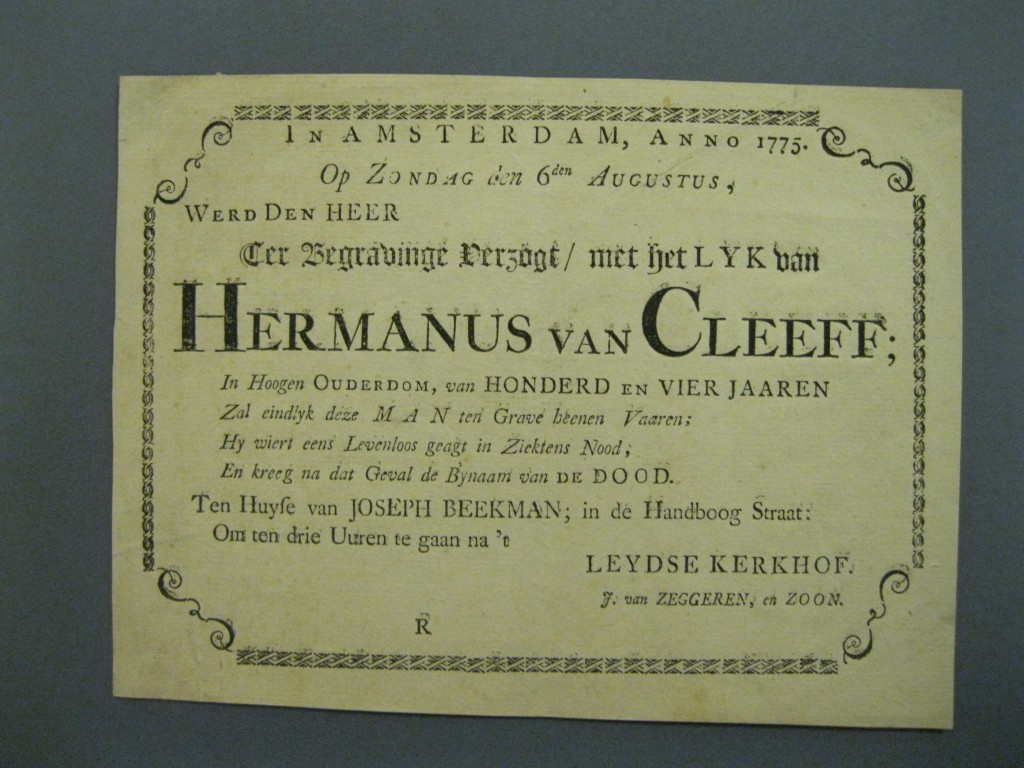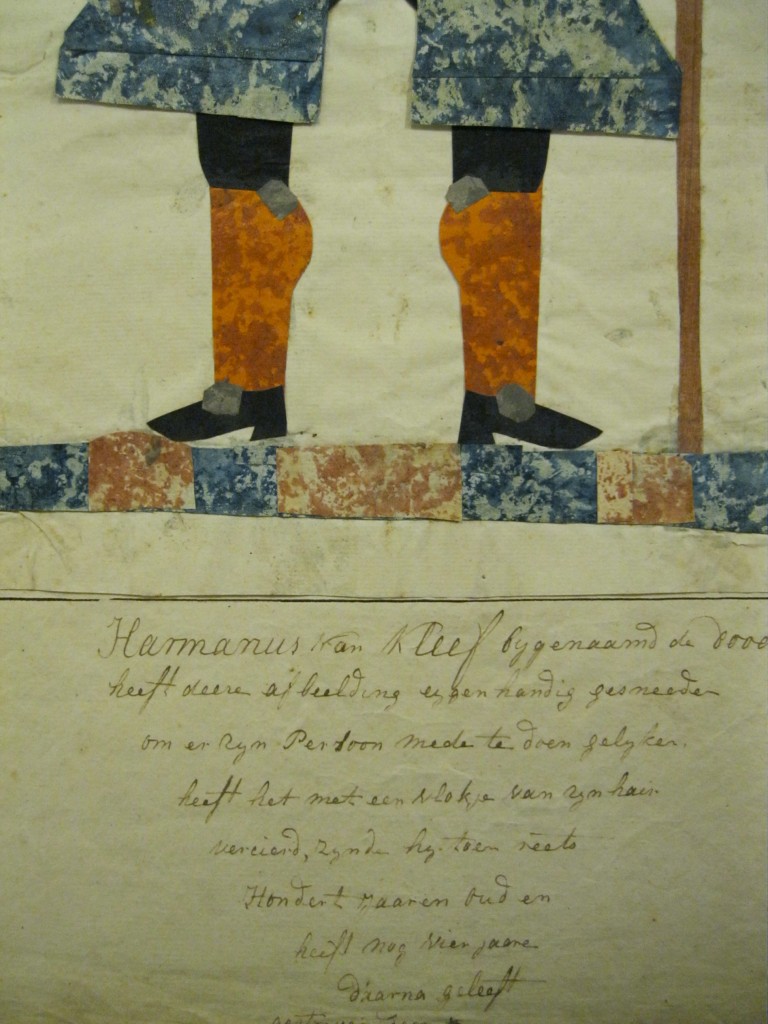In Amsterdam, in the year 1775, on Sunday, the 6th of August, will be interred the body of Hermanus van Cleeff; in high old age, 104 years, shall finally this MAN be put into his grave; he was once lifeless, in dire need, but revived; and acquired after that event the nickname of Death.
Thus begins a burial announcement that found its way into the History of Medicine Collection Picture File, an assembly of posters, cartoons, engravings, and caricatures all relating to the practice of medicine. The collection is currently being arranged and described, and there are some interesting finds throughout.
In actuality there are three pieces to this funerary group, which was purchased from the Shuman family – rare book and manuscript dealers from whom Dr. Josiah Trent, surgeon and Duke Medical School faculty member, acquired most of his rich collection in medical history.
The first two items – the printed burial notice, and its English translation on University of Chicago letterhead – are intriguing enough. But the third piece captivates the imagination: a lively self-portrait of an old man with a cane, allegedly the centenarian himself, fashioned from colored paper and finished off with a real lock of white hair (ostensibly human).
The English translation to the caption under the silhouette states that “Hermanus van Kleef, nicknamed Death, has cut out his picture with his own hand, made it look like his own person, provided it with a lock of his hair. One hundred years old and lived yet four years thereafter…”
I haven’t been able to discover who Hermanus van Kleef (or Cleeff) was – he may have been an ancestor of the famous Jewish family that later founded the jewelers Van Cleef and Arpels. As I gaze at this little figure triumphantly standing his ground, I congratulate him for cheating death through this wonderful piece of self-expression!
Post contributed by Paula Jeannet Mangiafico, Senior Processing Archivist in Rubenstein Technical Services.






Oh, I love it!